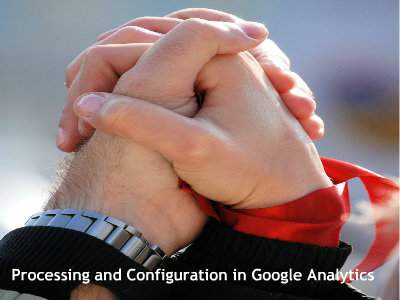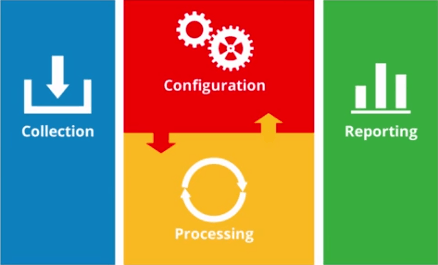In the previous post we covered one of the main components of Google Analytics: Collection. We talked in details the way Google Analytics collects data about your website or mobile app visitors using JS or SDK.
In this post, we are going to discuss another two main components: processing and configuration in Google Analytics that are working together hand in hand. Processing and configuration in Google Analytics (GA) are two crucial building blocks in Google Analytics system. They cooperate together to construct, structure, order and transform collected data into the intelligent information we see in our reports. For better data management and interpretation in the generated reports, it is important to overview and understand how collected raw data is being transformed into processing and how the applied configuration settings can affect data during processing.

Processing and Configuration In Google Analytics.
GA is a super statistician and learning machine par excellence. Regardless of how data collected (JS or SDK ), when certain interactions or engagements (hits) took place in your website or app, they are sent right away to Google Analytics servers to be processed. In other words, this can be expressed as a transformation phase where raw data is being transformed into valuable insights and well organized data.
Transformation of data happens in four ways during processing. With configuration settings in your Properties and Views, you can take full control of how your data will be transformed or processed.
1- First, the collected hits are sorted by Google Analytics into users and sessions. Hits are the users interactions or engagements that occurred in your website or app. Remember, GA platform uses a number of rules to distinguish users and sessions. You can configure these rules in the configuration settings.
2- Second, importing data is possible with Google Analytics. For example, if you want your Google AdWords , Google webmaster tools or even non-Google data to be processed on Google Analytics, you need only to configure them on your account settings.
3- Third, any configurations that have been made will be processed the way it was configured.
4- In the end, here Google analytics utilizes a process named ” aggregation” where it presents and makes data ready in meaningful database tables. And voila, your data can be extracted easily any times you need them. 
How Hits processed in Google Analytics.
What are Hits in GA? Google Analytics triggers hits when there is a certain interaction happening in the website. Next, interaction data is packed and sent to GA servers. In other words, each time the tracking code is being rendered by a client (let’s a browser or a user), GA logs or takes notes to the activities flow on the website or app. Recall, hits are collected through JS or SDK. Some examples of hit types are social hits, event tracking hits, or E-commerce hits, page hits.
Users, sessions and interactions are three ingredients that Google Analytics employs to organize data. Basically, those components come from the hits that Google Analytics tracking code send to its servers.
To explain, GA transforms hits into users by assigning a unique ID each time a visitor is being detected on the website based on the device (Desktop, mobile, app). This is how GA records a New User. On other hands, a Returning User is counted when that Unique Id is being matched.
If those IDs erased or deleted by removing cookies on a browser or by re-installing an app, Google Analytics will create a new brand Unique ID. As a result, a New User will be computed instead of a Returning User.
What about how Google Analytics transforms hits into sessions? Sessions are –in many analytics platforms– known as an amount of interactions, engagements, or hits from a specific user during a limited period of time. For instance, this may include social interactions, e-commerce transactions or pageviews.
Session timeout length in Google Analytics is set for 30 min by default. But it can be configured on Google Analytics Admin to reflect the nature of your website ( example: time spent on a video website is not the same with a blog website). By setting a time frame, Google Analytics can –in this way– record exactly when a certain session starts and when it is going to end.
Overview:
As you can see, the two components of processing and configuration in Google Analytics play a major role in organizing, logging, constructing, transforming and configuring collected raw data into meaningful data that we see it on your reports. In brief, this is how data is organized to be ready for Reporting on Google Analytics interface. Please stay tuned! We will be covering Reporting component in next post.
If you have any feedback or comments, kindly share them in the comment section located below. Interested in receiving marketing tips, updates and more interesting stuff? You can subscribe to our free newsletters!

 English
English  German
German Russian
Russian